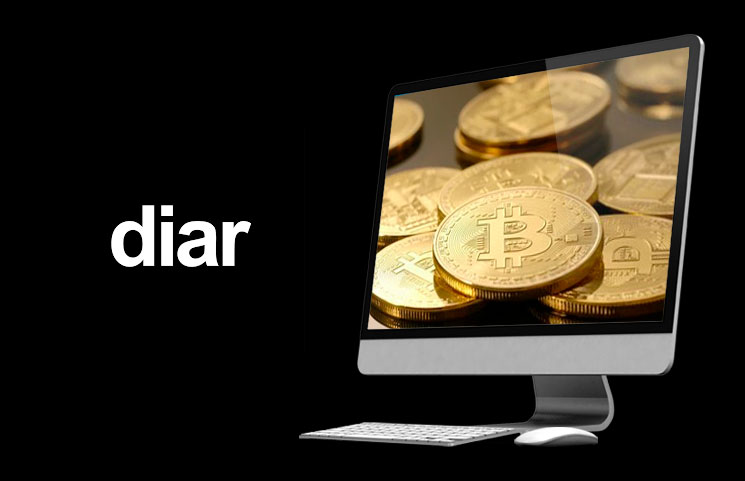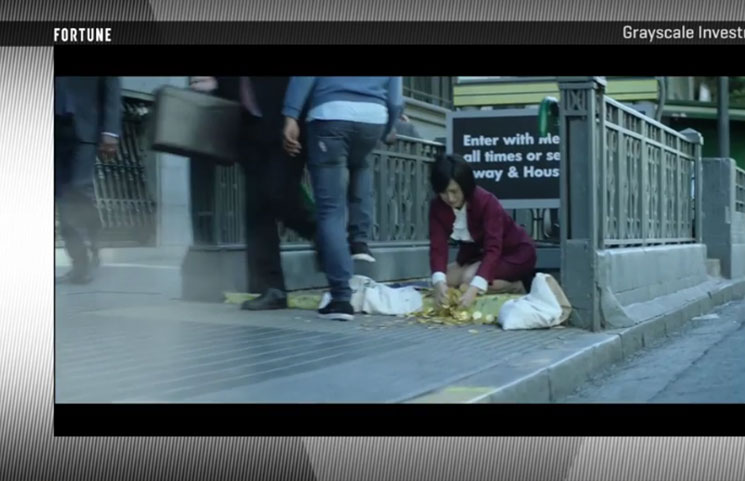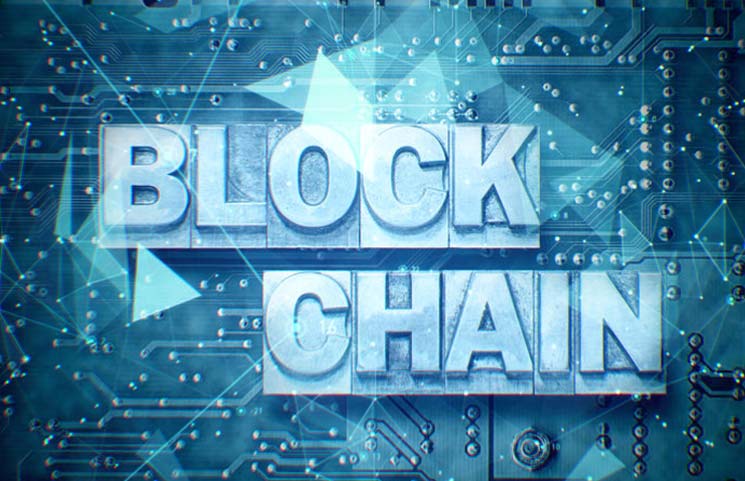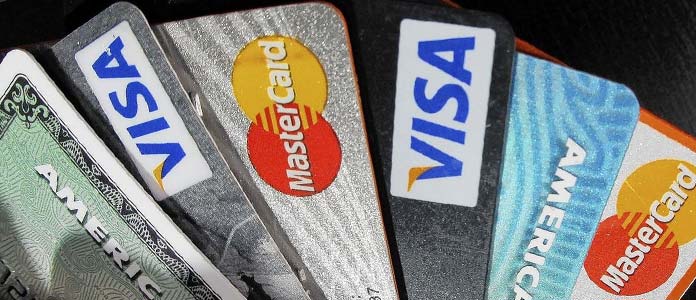Cryptocurrency Information
Bitcoin Volumes Finally Grow Again and Bitfinex/Tether Issues Spark Systemic Risks, New Diar Report Affirms

Diar has recently published its report of the crypto market for April. According to the company, Bitcoin volumes are finally growing again and the whole situation with Tether and Bitfinex showed the industry some of its systemic risks. DAI fee hikes and stablecoin projects were also highlighted in the report.
Bitcoin Goes Back To Growing Again
The main highlight of the month is, obviously, that Bitcoin is back on the action. After facing lows which started in 2018, the token has finally been able to effectively reverse the trends and have an actual price surge this month, going from less than $4,200 USD to over $5,200 USD during this short timeframe.
With this, the number of on-chain transactions has spiked for three months in a row, since prices started to get some of their value back in March and April. Now, transaction volumes are around their levels in June 2018 when the price of the asset was around $7,000 USD.
However, charts indicate that Bitcoin is yet to find more footing outside of speculative trading, so the bull market may not be as near as some think.
When looking at the volume of the whole quarters, Q1 2019 had lower volumes than Q4 2018, but Q2 2019 started considerably well.
Bitfinex and Tether Start Concerns of Systemic Risks
As you may have heard, Bitfinex was accused of using Tether funds to cover up its losses. According to Diar, there is a 26% shortfall of in-cash reserves to back Tether tokens (USDT). Tether loaned $850 million USD to Bitfinex to cover up losses and its general counsel Stuart Hoegner has affirmed that the company is operating with fewer reserves than the total market cap of the token.
This happened because Bitfinex had the $850 million USD “seized” by Crypto Capital, one of its payment processors. Unless Hoegner is lying, though, the company had the assets to back the stablecoin until recently.
While it is clear now that Tether simply does not have the money to back the funds, people simply keep buying the tokens. Now, instead of all cash, some shares of Bitfinex are being used to represent the rest of the value, which makes the stablecoin enter securities territory for the first time.
Curiously, the markets are all very tolerant now since the prices are still stable but the systemic risks are clear, especially if other companies are to follow Tether’s path.
DAI Hikes Fees Once More
Another situation highlighted by the reports is that DAI has decided to upgrade its stability fees once again as the community is desperately trying to make the prices of the so-called stablecoin go up again. DAI tokens are being sold for less than $1 USD, their official price, on secondary markets.
At the moment, the fees are 16.5%, after increasing three times in only one month. Before April, the fees were only 7.5%. This has resulted in a decrease of 4.9% in the circulation of DAI tokens.
Stablecoins Eye Wider Use Cases
Gemini and Harbor, a A16Z tokenized securities platform, have started a partnership in order to get more clients for the Harbor stablecoin. However, this was deemed “too soon” by Diar, as Harbor does not have any known token right now. The only one the company had was canceled.
TrustToken is also trying to get more stablecoins on its list, especially the ones that are not focused on USD, but on several other fiat currencies like HKD, CAD or GBP instead.
Cryptocurrency Information
#DropGold Campaign to Hit Your TV, Here’s A Breakdown of the Underlying Bitcoin Message(s)

Grayscale, a leader in digital currency investing, launched an ad on Wednesday, May 1, telling investors that money should be contributed to Bitcoin holdings as opposed to gold. In a number of interviews, CEO of Grayscale’s parent company (Digital Currency Group), Barry Silbert and Managing Director of Grayscale, Michael Sonnenshein, have since expressed the underlying message of the ad.
The #DropGold Ad
According to news outlet, U Today, the ad starts off with a man holding gold bars in his arm, which he decides to drop. While doing so, a woman also does the same. Throughout the ad, people supposedly have their gold bars stacked in shopping carts, while “losing their gold coins.” Watching what’s about to unfold, the two individuals try to find their way out.

Advertising Bitcoin or Grayscale’s Services?
Despite being the one to have introduced this campaign, Silbert argues that it isn’t entirely about Grayscale services, but rather said services being a result of consumers’ decision. Yahoo Finance has since quoted the following comment made by Silbert himself:
“We do not see this as a Grayscale commercial. For us #DropGold is our ‘Got Milk’. This campaign is first and foremost focused on starting a conversation about bitcoin vs gold. If the ad makes people want to get into Bitcoin, we’re completely indifferent about how they go about doing it.”
Having said this, the commercial is evidently portraying Grayscale as an option, as towards the end, one is told, “Go Digital. Go Grayscale.”
Silbert’s and Sonnenshein’s Arguments Regarding Gold’s Limitations
Silbert believes that this campaign works towards addressing the fact that Bitcoin can serve as an equal asset class as gold, if not better. In particular, he was quoted saying, “But now you have Bitcoin, which, in our opinion, provides all the same attributes as gold – it’s fungible and scarce and you can’t counterfeit it – but the big difference is that Bitcoin has utility. Gold doesn’t have much utility beyond jewelry.”
He further argued that the goal here isn’t to replace fiat currency for shopping purposes, but rather to show the world that Bitcoin does a better job at doing gold’s job and this will be evident in the long run. Although he has acknowledged Bitcoin’s volatility as being concerning, he is hopeful that it will one day serve as both an ideal utility token and store of value.
As for Sonnenshein’s viewpoint, he sees this ad as revealing the “absurdity” associated with gold. More specifically, he said:
“We’re going after a narrative around gold being where investors should go when markets turn south or as a hedge against inflation […] we’re highlighting the absurdity of gold.”
As per The Block Crypto, Grayscale also tries to convince investors that the return earned from redistributing 5% of gold to Bitcoin will be greater than 5% yearly.
What are your overall thoughts on this ad? Did it leave you asking yourself, “Why did you invest in gold? Are you living in the past?” Share your thoughts below!
Cryptocurrency Information
Huobi Pro Bitcoin Exchange: Cryptocurrency Asset Trading Platform?

Huobi Pro Cryptocurrency Exchange
Founded in 2013, Huobi Pro allows for a myriad digital currencies to be exchanged, at a 0.2 percent trading commission. Loyal users point to the low fees and stellar service that make the exchange stand out above others.
Although pitched at dedicated cryptocurrency enthusiasts since the site doesn’t accept fiat currencies many who enter the realm on the back of fiat end up at Huobi Pro, largely due to its diverse offering and favorable fee structure.
Huobi Pro in A Nutshell

A victim of China’s clampdown on digital currencies, the company might be registered in the Seychelles, but was originally founded in Beijing. As testament to the broad appeal of the platform, after the Chinese regime effectively banned all things crypto at the beginning of 2018, trading volumes have only grown.
While at first very much a Chinese company looking at the home market, Huobi Pro has been forced to find a wider marketplace on the international scene. Indeed, even prior to the official cessation of altcoins and their trading, the company heard the rumblings in 2017 and took its cryptocurrency interests abroad.
Huobi now provides exchange services to users in over 130 countries. Company offices are located in the USA, Korea, Japan, Singapore and Hong Kong. Although the Huobi Group also owns and manages the Huobi Autonomous Digital Asset Exchange (HADAX), Huobi Pro is more of a pure “login and trade” exchange.
Users can employ network tokens to cast votes on adding new altcoins on HADAX. On the Huobi Pro exchange, a simplified offer encompassing all of the mainstream altcoins greets visitors. Some more popular coins offered are Bitcoin (BTC), Bitcoin Cash (BCH), Ethereum (ETH), Litecoin (LTC), NEM (XEM), NEO (NEO), Qtum (QTUM) and Ripple (XRP).
That said, when one actually tallies the number of altcoins available for exchange, it becomes apparent why loyal followers value the site. A marriage of both simple ease of use and diversity in trading, the platform is largely welcomed by newcomers and experienced enthusiasts alike. In the current melee of regulation being contemplated, implemented and tweaked all the while, some users may be precluded from trading on the exchange based on their country of residence.
Huobi Pro accepts the funding of accounts only in digital currencies, and accepts deposits in any of its listed altcoins. Unlike other exchanges that have opted for a midway between crypto and fiat, Huobi Pro traders deal strictly in digital coins at every point of a transaction. Funds need to be withdrawn to a wallet, and fiat users looking to buy in will have to establish a wallet first in order to fund their Huobi Pro trading account.
Traders pay a maker or taker fee of just 0.02 percent using the exchange. There are more detailed offers, worth looking at for daily traders with volume.
Huobi Pro Membership Levels

VIP users get preferential platform trading fees if they buy the privilege with Huobi tokens. The Huobi Token (HT) was never an ICO token, but rather a system token that users only obtain by buying “Point Cards” on the Huobi Pro platform. Point Card is essentially a pre-paid Huobi card that keeps users liquid on service fees. One HT = 1 USD, therefore one “point” = 1 USD. The more points purchased, the more free points are added, although savings on 1000 points, for example, means only 10 HT for free.
Huobi Global minted a fixed total of 500 million tokens, with 300 million employed to facilitate the in-house VIP structure. A mark of the business group behind the platform is seen in their practice of buying back-sold tokens from the open market each quarter. Not only that, but those funds go towards the Huobi Investor Protection Fund (HIPF).
This is a planned fund that will compensate investors who suffer platform disruption and subsequent losses. It’s a tool that minimizes risk, smooths out the market overall and also goes towards protecting investor interests. This transparent and pleasing aspect of the platform is one reason traders have confidence in the exchange, and its popularity is rising worldwide.
By way of example, in order to glean a VIP status, a trader will pay 120 HT a month for First Level membership. This enables a 20 percent discount on trading fees. Running through toward the top end, a pricier option of 6,000 HT a month secures a 50 percent discount on fees. Overall, a diligent trader can optimize the system and come out with a substantial discount on the already low 0.02 percent base offer.
The company charges no fees to deposit funds, but there are withdrawal fees. Although there are reviews online listing withdrawal fees, it appears that, especially within the membership structure, users are advised to ascertain exact fees when establishing their account. Likewise, transfer limits need to established upfront to avoid disappointment later. There exist order size limits on the platform too, again becoming more malleable as one moves up the ranks of the VIPs.
Security And UX On Huobi Pro

All of the standard protocols including two-step Google Authenticator verification are at play on the platform. Unlike many other exchanges that offer a simple crypto-exclusive platform, Huobi Pro will need your personal details in the form of a passport copy and chat room comments are not devoid of complaints, although almost all of them take issue with the structure of the platform and its potential pitfalls. There are few allegations of lost funds or other negligence on behalf of the company. On the whole, Huobi Pro seems to be rubbing off its decidedly corporate ethos onto the exchange – good news for traders overall.
Another serious boon for the cryptosphere as a whole is that over 98 percent of holdings are stored in an offline cold wallet or vault. Imbued with a strict customer service ethic, the platform probably sports the best customer service to date for crypto exchanges. Available 24/7 365, there is a live chat option onsite.
The platform intel is sufficient although newbies might have to scratch to paint a clear picture of how exactly everything works. The FAQs are thoughtful and, again, testament to a polished offering. Huobi used to be one of the biggest Chinese crypto exchanges, based in Beijing. Started by entrepreneur Leon Li in 2013, since the move there has been mutual appreciation of its value. Worldwide users have taken to the exchange, as it too realized that it had global appeal.
Huobi Pro Conclusion

Huobi claims to have exceeded BTC 500,000 in daily trading approaching 2014. Although only in its fifth year, that’s a long time in cryptocurrency. Although frequently accused of embellishing trading volumes, these allegations have never been proven. In comparison to other digital exchanges that have suffered persistent user complaints and even been shut down due to criminal activity, Huobi Pro shines.
As an offering, it has low fees, great diversity and an unbeatable crypto-energy. No trader on the platform feels like they’re missing out on something else somewhere else, by most accounts. Possibly due to their prior involvement in the fintech world, the platform got it right first time around and user numbers prove it. The company Huobi also owns another trading platform, BitYes, more focused on USD/BTC and USD/LTC pairs trading. Great customer service and minimal technical glitches have made it appear positively top-tier, again in comparison to less polished outfits.
With a detailed offering, great client liaison – very unusual for most digital exchanges so far – and no legitimate proof of anything even vaguely dark hanging about them, the Huobi Pro project is recommended. Users are advised to always ascertain costs prior to trading – not hard with the customer support in this case – and sample a platform with small trades before trading greater amounts. To learn more, you can head to their official website: huobi.pro
BlockChain & Smart Contact
Blockchain Distributed Ledger Technology: The Answer to Banking System Issues

Is Blockchain the Answer to Banking System Issues?
It is evident that the banking system in its current state is flawed. The banking system relies too heavily on multiple third-party verification's as well as transferring services for each transaction. The jumble of the third-party services needs to be ironed out, and the best way to do that is through blockchain technology.
By using blockchain technology within the banking system, third-party organizations can be sidestepped. Not only is the blockchain technology useful in smaller banking systems, but it is also helpful for the most prominent and well-known financial institutions. The blockchain is transforming businesses globally by offering to perform various transactions securely in a peer-to-peer manner, cutting out the middleman altogether.
Due to the shabby current state of global banking, we've witnessed multiple government bailouts. These government bailouts are what has spawned the birth of cryptocurrencies. Even in the beginning, when Bitcoin first came on the scene the creator Satoshi, left a reference to the bailout from the London Times in BTC's genesis block, making it abundantly clear that this was his motivation for creating the cryptocurrency.
The First Bank: A Brief History

In order to understand how vital blockchain technology is over the current banking system, you need to understand a brief history of banking. You see in the beginning banks were used as a mean to store gold securely. In fact, the first bank was nothing more than a gold depository. Wealthy individuals would drop the gold off and be issued a receipt. This receipt would then be used around town to purchase items. When the banker of this institution realizes that people never came to collect their gold at the same time, he began to lend out other people's gold with an interest rate.
When the townspeople began to get suspicious of the banker and the wealth that he accumulated, they demanded to see the vault. To their surprise not only was everyone's gold within the vault, but the banker had also collected extra because of the interest that he was charging. After seeing the amount of interest that the banker had made, the wealthy individuals wanted in on the action as well. To this day banks now have to pay you a small interest on your holdings. However not much as changed since the birth of that first bank. It is still considered a third-party institution which makes a profit off of holding your funds.
A New Way

Of course, none of these steps are necessary any more thanks to blockchain technology. Because technology has changed and advanced so much over the last decade, it surprising that the banking system hasn't followed suit. It is apparent that the world cannot continue to bail out fraudulent bankers. Nor can we afford to run on a fiat-based financial system. If we incorporate blockchain technology, we could eliminate many of the banking problems that we see today.
Peer-to-Peer

The idea of peer to peer has no use with the banking system that relies heavily on a combination of verification's and other monitoring platforms to ensure your funds are sent. Did you know that each time you swipe your debit card, there is, are 30 different third-party institutions in place to complete that single transaction? Now multiply that with all the various shops you go to in the course of the day. A coffee at Starbucks, gas at the pump, takeout dinner, and paying the bills. Every transaction where your debit card is swiped goes through the same process.
First, your bank must check the balance to verify that you have the funds to spend. Next, the bank must verify the account where you are sending funds to ensure that it is correct. Once that is done, it has to interact with the merchant processing firms and check Visa or MC, and the list goes on just to make a single purchase. This explains why you can swipe your debit card at any given time, but when it comes to refunds, it can take weeks or even months to process.
The Transparency of Blockchain Technology

The beautiful thing about cryptocurrencies is that it eliminates the middleman. No longer do you have to jump through hoops or wait for third-party verification. Blockchain technology is transparent, which is why it makes it ideally suited for all financial services. There is never a question when it comes to blockchain technology due to its transparency. Anyone at any time can check a wallet on the blockchain. And if the funds are present, they are sent immediately to the individual or company that is involved with the transaction.
Sending Money Internationally

When it comes to sending large amounts of money internationally going through traditional routes of the banking institutions can take days and even weeks to complete. During that holding period, the money is inaccessible to both parties. It is common in the banking world for funds to be on hold for over a week.
However, with the use of blockchain technology, there is no waiting time. Funds are sent automatically regardless of the amount. The ability to send substantial funds through blockchain technology is a considerable advantage compared to the current banking system.
Imagine how much easier it would be if you are a large international company trying to send millions of dollars in capital internationally. With blockchain technology, you would be able to accomplish this task quickly and efficiently without the additional delays. The funds would be transferred more securely, and you would be able to avoid the losses that accumulate when converting your funds. After all, 1 million BTC and China is 1 million BTC in the United States.
Records and Tracking
![]()
Another beautiful thing about blockchain technology is that the funds are traceable and immutable. Hacking of the data is unheard of, yet it's easy to search for a single transaction within the chain. If the banking system integrated blockchain based technology issues like identity theft or disputed transactions would be swiftly dealt with in a timely fashion. There are some banks that are starting to see the advantages of this technology. So don't be surprised in the near future when many more banks will follow suit as the technology continues to advance.
Farewell to Credit Bureaus

By incorporating a blockchain based system credit bureaus would be rendered useless due to the transparency of the technology. Anyone using the blockchain technology searching for a loan will easily be able to bring up their financial history and prove their ability to repay their loans.
Imagine being able to see your credit report anytime you want. As of right now, credit companies are only obligated to provide a free single yearly report. The credit bureaus thrive off the technology that is no longer required or needed.
Increased Security

When it comes to security, blockchain technology is light years ahead of the game. With an unhackable system and the redundant nature of the protocol, your funds are safe, secure, and at your fingertips.
A Blockchain Future

For the first time in history, a decentralized global economy is a reality. With the advantages of the blockchain technology, the central banking system will soon be put out to pasture. This explains why the financial institutions have been so vocal in their opposition towards cryptocurrencies. The people no longer want the long waiting periods for sending funds, nor the third-parties to be involved with their finances. A new day is dawning, and the financial institutions know their time is running short and efficiency will win in the end.










